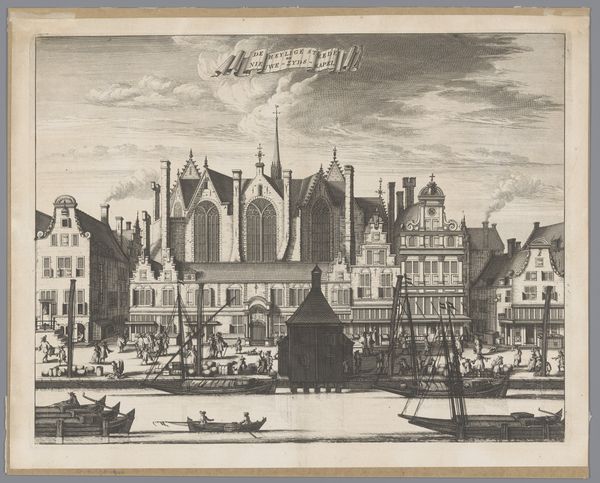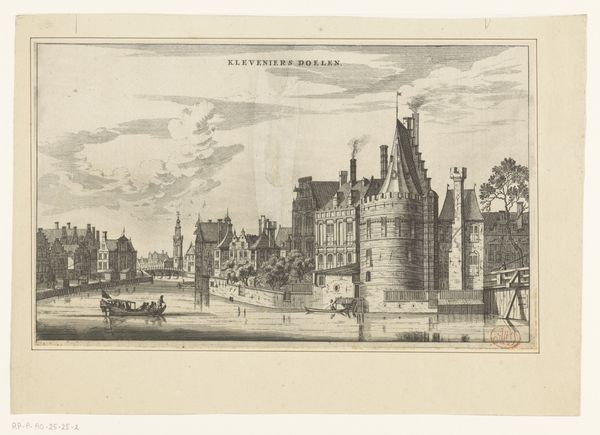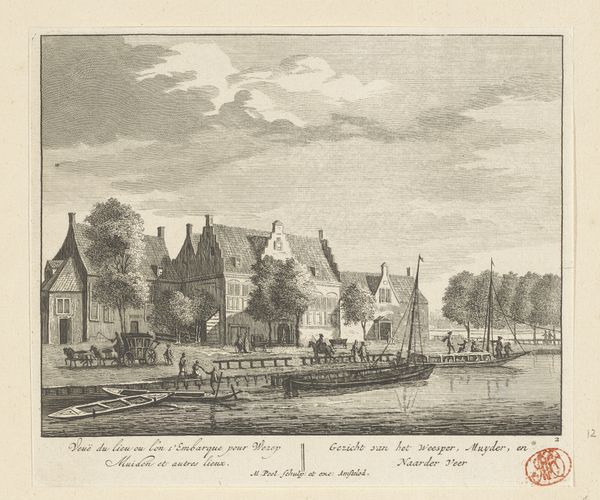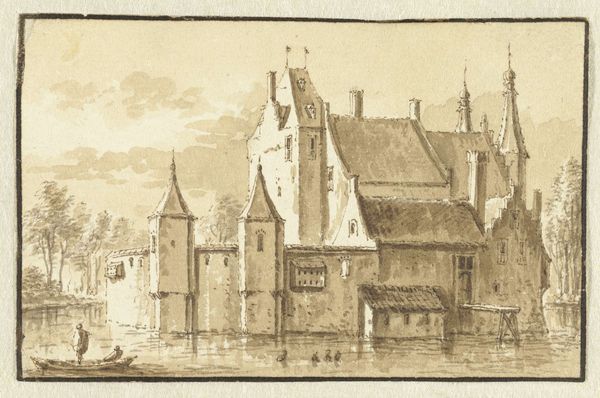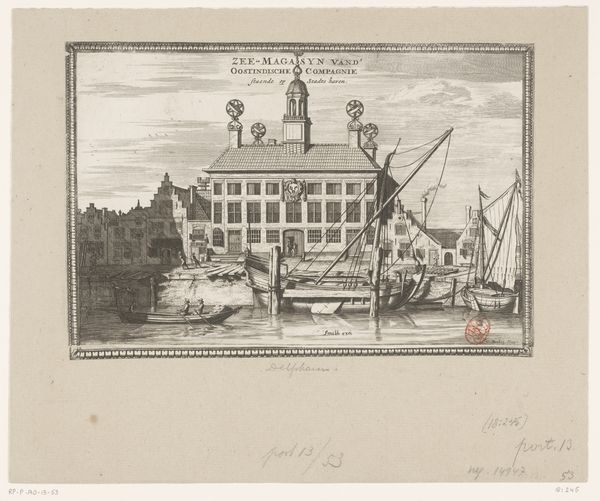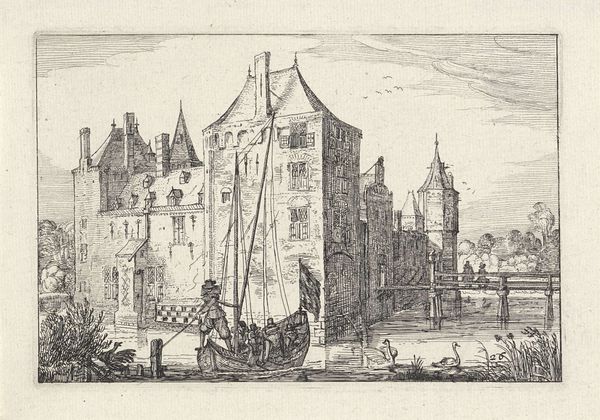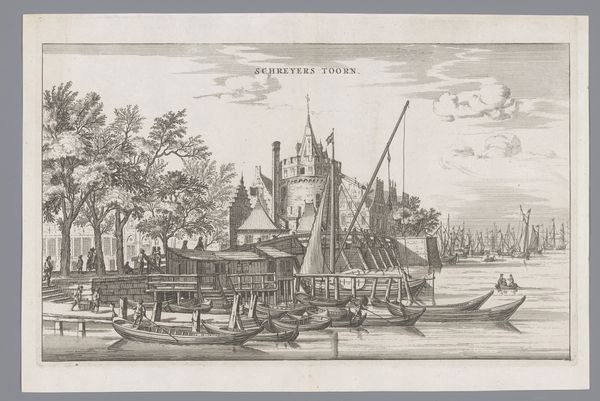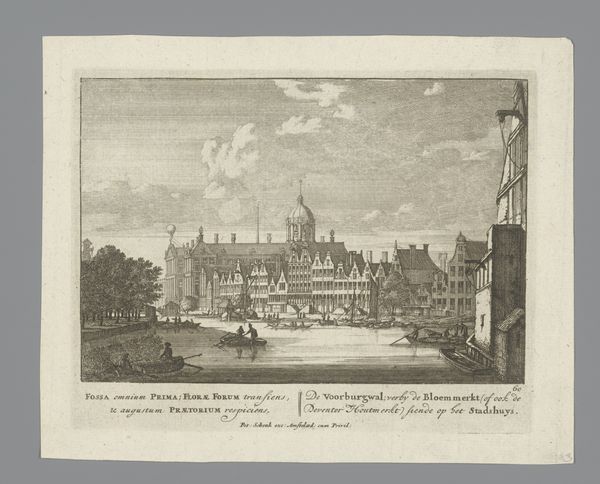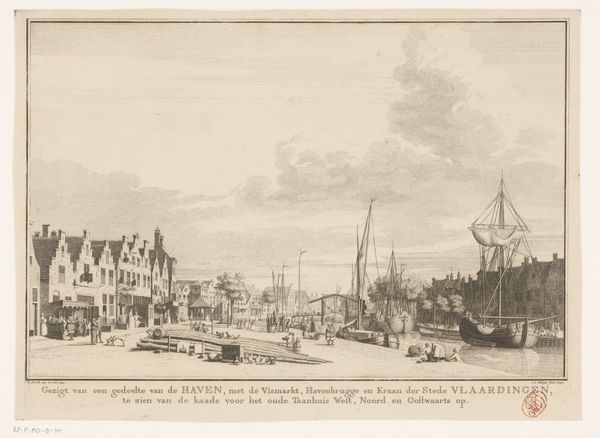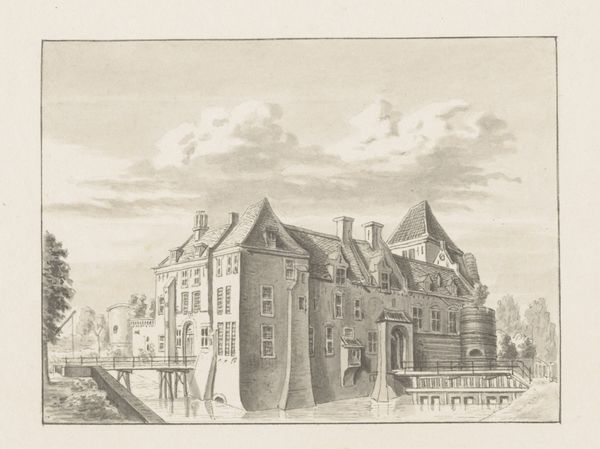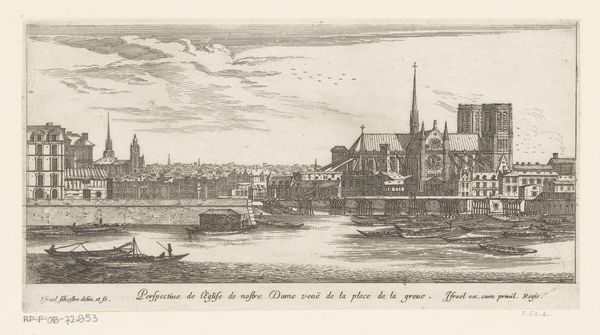
Gezicht op de Heilige Stede (Nieuwezijds Kapel) te Amsterdam 1663 - 1664
0:00
0:00
etching, architecture
#
baroque
#
dutch-golden-age
#
etching
#
landscape
#
etching
#
cityscape
#
architecture
Dimensions: height 190 mm, width 296 mm
Copyright: Rijks Museum: Open Domain
Curator: Here we have "Gezicht op de Heilige Stede (Nieuwezijds Kapel) te Amsterdam," an etching by Jacob van Meurs dating back to the 1660s, a defining moment for the Dutch Golden Age. Editor: It evokes such a quiet sense of industry. All the activity focused on the water’s edge makes the church behind seem almost like a still, silent observer of the bustling port life. Curator: It's fascinating to consider how Van Meurs translated the sheer architectural scale into the precise lines of an etching. What do you make of his technique in this piece? Editor: The architecture looms large, almost as a personification of faith presiding over earthly transactions. Consider the masts of the ships; they point towards the steeple, almost reverential. It connects commerce to a higher spiritual order. Curator: Interesting. I tend to view the piece as reflecting on the labor and trade essential to the Dutch Republic's wealth. Etching allowed for reproducible images that could be circulated widely, creating a visual record of the era’s commercial activity. Note, too, the attention paid to representing different modes of work and transport within Amsterdam. Editor: Absolutely, it reflects the prosperity of the Dutch Golden Age. Look how the church's name, 'Heilige Stede,' the 'Holy Place,' lends an almost sacred aura to the commercial activity itself, as if godly approval rests upon the industrious spirit. Curator: What I see more profoundly is how an etching, in its accessibility, democratizes the cityscape, portraying it for a wider public. This connects directly to how the printmaking trade thrived within Amsterdam's very material conditions. Editor: And this convergence creates an incredible interplay of cultural symbols! The chapel itself, juxtaposed against the ships and workers, presents a visual symbol of the era's ambitions. The architecture and industry, faith and fortune all tightly linked. Curator: Yes, and it gives you such a clear understanding of what values were being promoted and projected outwards into Dutch society during the period in question. Editor: Studying these enduring images, we’re really excavating the values embedded within a society and continuing their visual narrative into the present day. Curator: An exemplary look at how process meets practice, indeed.
Comments
No comments
Be the first to comment and join the conversation on the ultimate creative platform.
